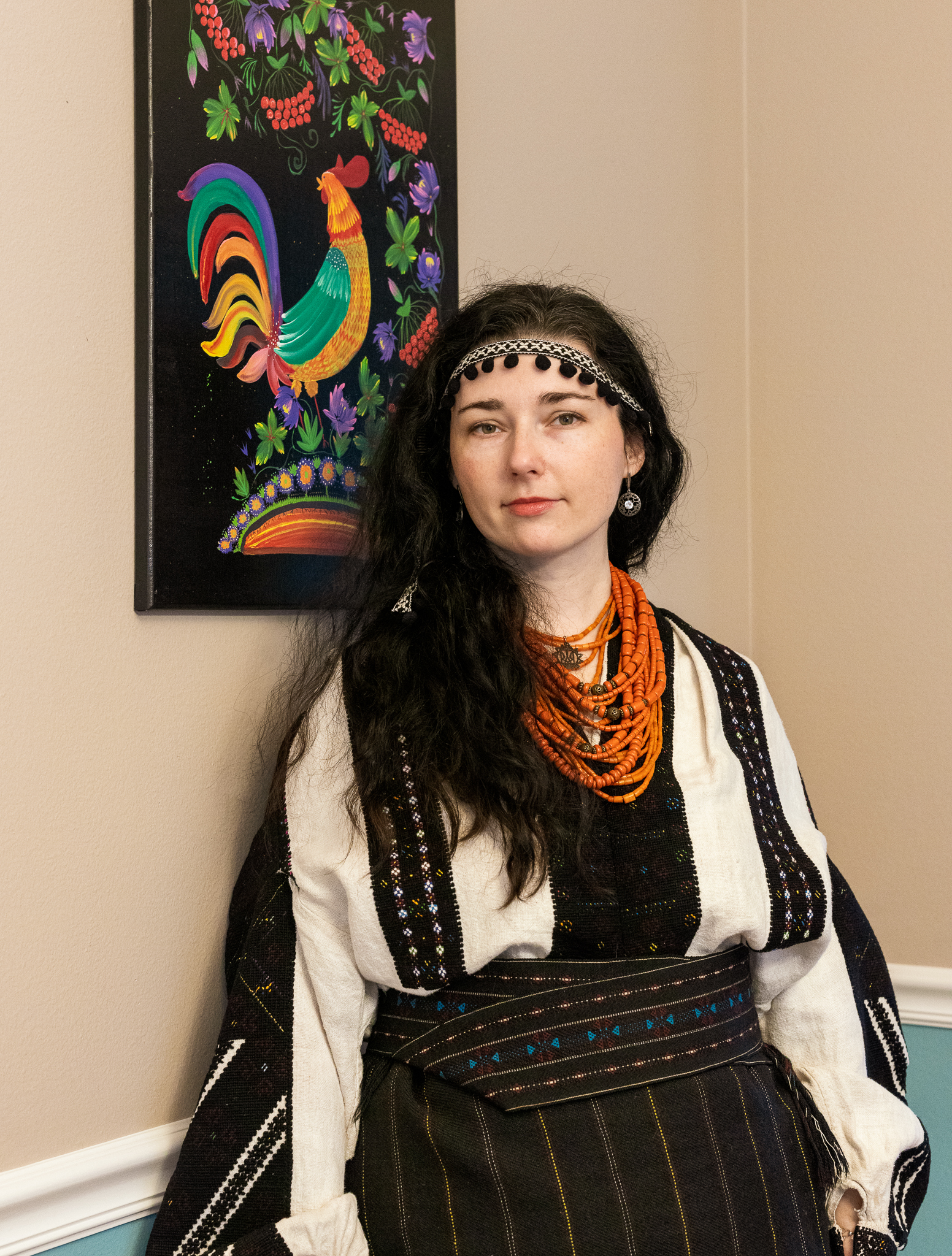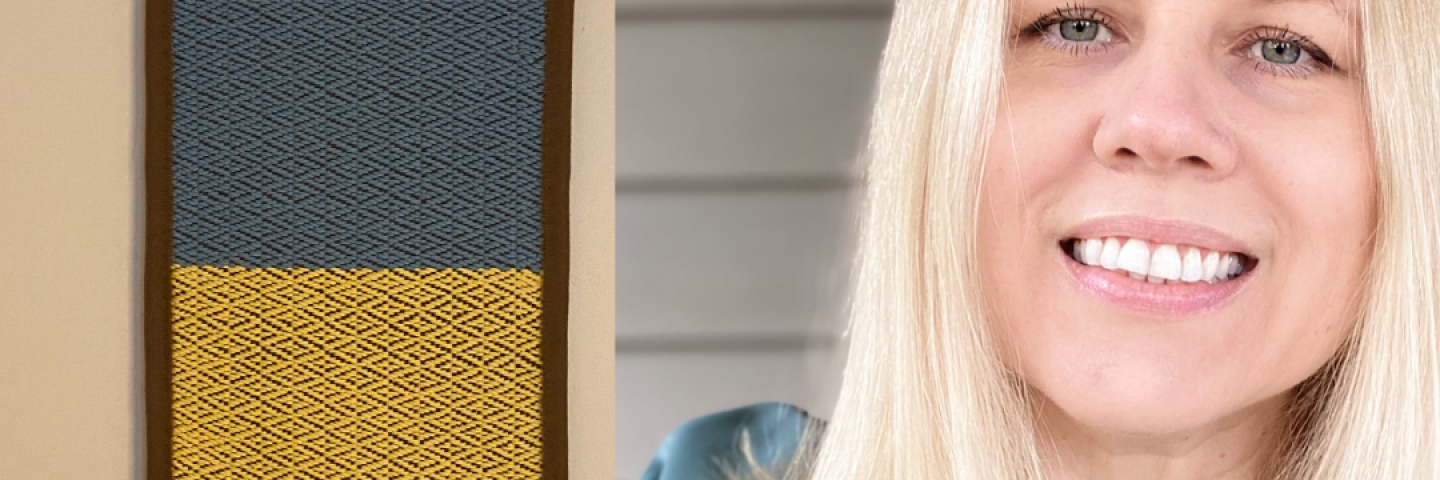ARTIST BIOGRAPHY
 | Traditional Skill/Art: Ukrainian Weaving Years Won: 2024 Contact Information: Phone: (503) 953-2044 Email: tbondarchuk19@gmail.com Website: https://ofn.uoregon.edu/profile/tetyana-horner-bondarchuk |
Tetyana Horner was born in the former Soviet Union and grew up in post-Soviet Ukraine. Growing up, Horner never felt part of the imposed Soviet culture and always felt that something in her childhood was missing. Although she made many creative things with her hands as a child, it was only once she moved to Oregon as an adult that she came to learn traditional Ukrainian weaving. In 2013, Horner sought out weaving classes at the Multnomah Arts Center. From there, she continued to learn, practice, source instructional books, and practice some more. She has demonstrated her weaving techniques in many Ukrainian community spaces and events, including Za Parkanom (a Ukrainian Cultural Festival in Portland), Vertep (a Ukrainian winter theatrical performance hosted in Portland), and the Ukrainian Foundation’s community events. Horner is slowly building her home studio so that she can begin teaching Ukrainian weaving to a more intimate audience. She says, “This is my way of healing: through art, preserving my cultural identity, and sharing Ukrainian culture with the members of my community”.
APPRENTICE BIOGRAPHY
 | Tetyana ZelyanovskaTraditional Skill/Art: Ukrainian Weaving Years Won: 2024 Website: https://ofn.uoregon.edu/profile/tetyana-zelyanovska
|
Tetyana Zelyanovska lived in Ukraine until just four years ago. Since moving, she has tried to keep Ukrainian traditions alive in her family. She was given a tapestry loom by a neighbor and taught herself some basics of tapestry weaving. She likes to make things by hand and has passion to continue to learn traditional Ukrainian weaving on a horizontal loom. She believes in promoting Ukrainian culture in any art form – she is also invested in practicing Petrykivka painting and Ukrainian singing. Zelyanovska also teaches the Ukrainian language classes. She shares, “After the war in my country started, traditional art has kept me more connected with my homeland and my people”.
Q&A WITH THE MENTOR ARTIST
In the older days, weaving was a part of everyday life. The traditional cloth was used to make clothing, woven rushnyks (towels), bed covers, blankets, and floor coverings. Some woven as well as embroidered rushnyks were used in special ceremonies and rites. Weaving looms were made of wood. My father once told me that when he was little (1950s), there was a weaving loom in every hata (log house) in the village he grew up in. Most women knew how to make yarn out of flax, hemp, and wool. In the fall, they would spin their yarn, so they could weave during the winter days when there was no work that needed to be done in the fields. Sometimes women gathered in one hata and span their yarn, wove fabric, embroidered rushnyks, and sang traditional songs.
Nowadays, traditional Ukrainian weaving is not practiced widely. It has become more convenient to buy fabric from a store and sew clothing, or even more convenient to buy ready- made clothing. With that, traditional weaving gets forgotten and is not practiced much. If there used to be a weaving loom in every village hata, there are two or three weavers per village these days.
Once, I visited my paternal grandma in the village where she lived in northwestern Ukraine. I found a large wooden frame structure in her attic. My father told me it was the weaving loom that my grandma used to make all the rushnyks and floor rugs in her house. Sadly, my grandma never taught me how to weave.
It wasn’t until 2013, when I had come to live in Oregon, that I began looking for weaving classes in my area. I took classes for two years and learned how to dress the loom and work on it. In the meantime, I purchased my first loom from someone who gave up weaving. I learned the rest from books I was able to find and a lot of practice. I have now been practicing for 10 years. I have participated in many community events demonstrating my weaving, as well as teaching multiple workshops.
When I first started learning how to weave, I could not seem to find any Ukrainian books with instructions. Finally, I managed to buy a rare copy of the Ukrainian Weaving Patterns with Instructions book in English, which had been published by a Canadian woman from the Canadian-Ukrainian diaspora. This book made me think about how Ukrainian culture had always been repressed in Ukraine but has been greatly practiced and survived within the communities of Ukrainian immigrants all over the world. I now believe that it is the mission of every Ukrainian immigrant to support Ukrainian culture, customs, and traditions and teach anyone who is interested in learning about them, especially in the time of Russia’s genocidal war in Ukraine, where many Ukrainians are fighting and losing their lives simply for being Ukrainian or for speaking the Ukrainian language.
Participant in Migration Stories Exhibit at Multnomah Arts Center in June 2018.
Featured artist in Amplifying Ukranian Voices: Ukranian Folk Artists in Oregon exhibit at the Knight Library, University of Oregon, 2022.
Presenting lecturing artist at the Museum of Natural and Cultural History, April 2023.
Oregon Chinese Coalition and Ukrainian community joint art show participant, May 2023.
Visit OFN's Culture Keepers Roster to learn more about the artist.
Traditional Arts Apprenticeship Program
More OFN programs
OFN main page
